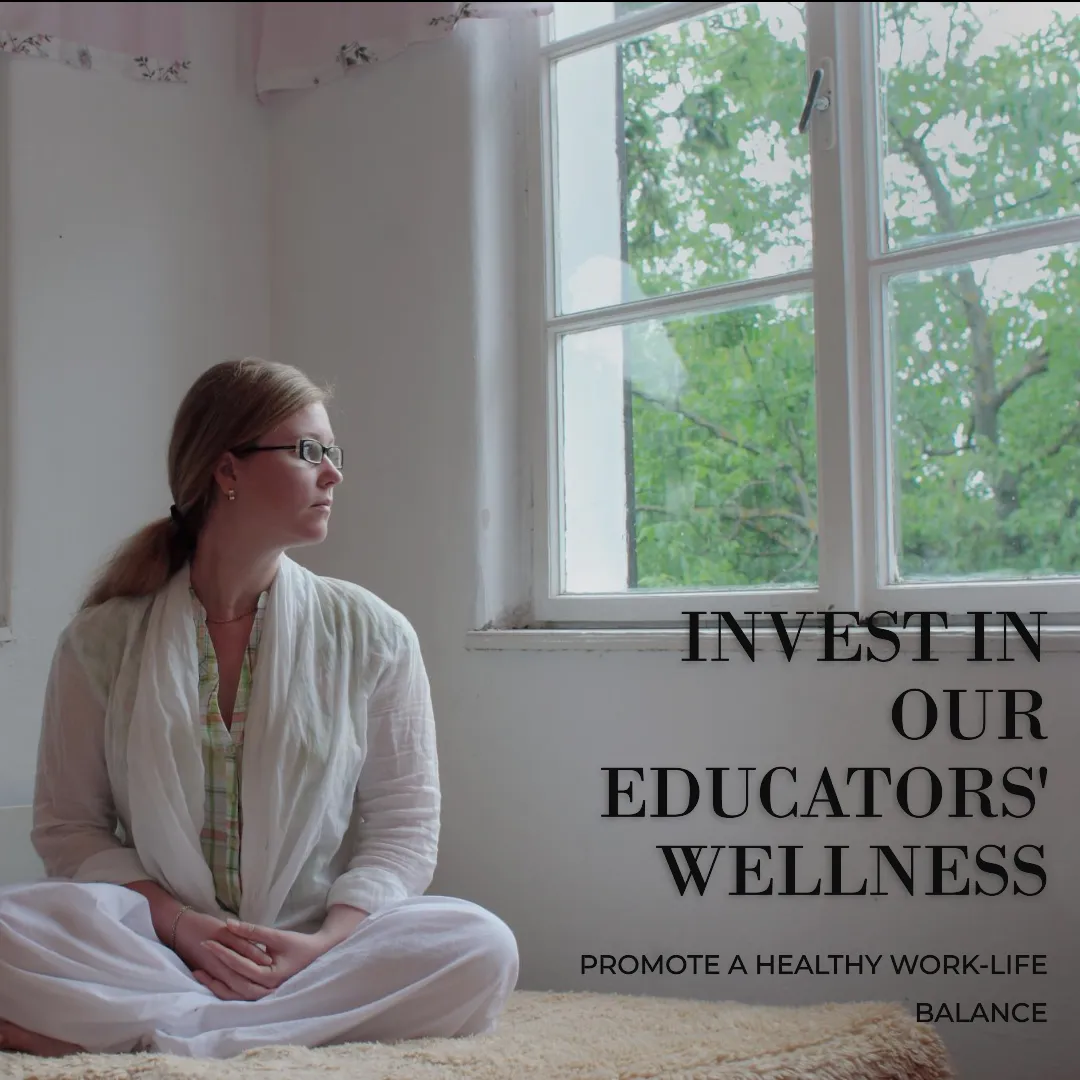
Investing in Your Most Valuable Asset Why Prioritize Educator Wellness
Investing in Your Most Valuable Asset: Why Prioritize Educator Wellness
The education sector faces a multitude of challenges. Rising student needs, standardized testing pressures, and ever-evolving curriculum demands place a tremendous burden on educators. This intense pressure cooker environment often leads to a concerning trend: educator burnout and staff shortages.
While the impact on educators is undeniable, the consequences extend far beyond the classroom. A stressed and depleted workforce directly affects the quality of education students receive. This blog post argues that prioritizing educator wellness is not just a feel-good initiative, but a critical investment in the future of education.
The State of Educator Well-being: A Cause for Concern
The numbers paint a concerning picture. A 2023 study by the National Education Association (NEA) found that 35% of teachers reported feeling burned out [1]. This burnout manifests in various ways, including chronic stress, anxiety, sleep disturbances, and even physical health problems [2]. Unsurprisingly, these factors contribute to a teacher retention crisis.
The Learning Policy Institute (LPI) estimates that the average cost of onboarding a new K-12 teacher can reach $20,000 [3]. When educators leave the profession, this creates a financial burden on schools in addition to the disruption in student learning.
Beyond the financial implications, a stressed and disengaged educator workforce directly affects student outcomes. Research suggests a correlation between educator well-being and student achievement [4]. Teachers who feel supported and have effective stress management tools create a more positive learning environment for students, leading to better academic performance and social-emotional development.
The Benefits of Investing in Educator Wellness
Investing in educator wellness is not just about addressing burnout - it's about cultivating a thriving and engaged workforce. Here are some key benefits:
Reduced teacher burnout and turnover: By offering programs that promote stress management, healthy sleep habits, and overall well-being, schools can create a more supportive environment and reduce the number of educators leaving the profession. This translates to cost savings and a more stable learning environment for students [5, 6].
Improved student outcomes: Research shows a strong link between educator well-being and student achievement. When educators feel supported and manage stress effectively, they create a more positive learning environment for students, fostering better academic performance and social-emotional development [7].
Enhanced teacher morale and engagement: Prioritizing educator well-being sends a powerful message: "We value you." This fosters a sense of community and ownership among educators, leading to increased engagement and a more positive school culture [8].
Enhanced school reputation and attracting top talent: Schools known for prioritizing educator well-being and fostering a supportive work environment will attract and retain high-quality teachers, further benefiting student learning outcomes and creating a positive cycle of success [9].
Implementing a Culture of Wellness in Your School
Investing in educator wellness is a multifaceted approach. Here's a starting point for implementing a culture of well-being in your school:
1. Conduct a Needs Assessment: Gather feedback from educators to identify their specific needs and challenges related to well-being. Consider surveys, focus groups, or anonymous feedback mechanisms to gauge stress levels, preferred support methods, and areas where the school can improve [10].
2. Develop a Wellness Program: Based on your needs assessment, create a comprehensive wellness program that addresses a variety of needs. This may include workshops on stress management and mindfulness techniques, resources on healthy sleep habits, access to mental health professionals, or fitness and wellness initiatives.
3. Promote Work-Life Balance: Offer flexible work arrangements, provide adequate breaks throughout the day, and prioritize reasonable workload expectations to help teachers achieve a healthy balance between work and personal life [11].
4. Foster Collaboration and Positive Work Culture: Create a supportive and collaborative environment where educators feel valued and heard. Promote team building activities, acknowledge and celebrate accomplishments, and foster open communication channels with leadership [12].
5. Measure and Track Progress: Regularly assess the effectiveness of your wellness program and use the data to make adjustments and improvements. This ensures that the program is meeting the needs of educators and continues to have a positive impact on their well-being and the overall school climate [13].
Conclusion: A Sustainable Future for Education
By prioritizing educator well-being, schools invest in their most valuable asset – their teachers. Empowered, supported, and healthy educators create a thriving learning environment for future generations. This investment not only leads to improved student outcomes but paves the way for a sustainable and successful future of education.
References:
1. National Education Association . (2023, January 18). Members Top Concerns - January 2023. https://www.nea.org/about-nea/media-center/press-releases/nea-survey-massive-staff-shortages-schools-leading-educator-burnout-alarming-number-educators 2. Skaalvik, E. M., & Skaalvik, S. (2016). Teacher stress and burnout: A review of the international research. Educational Psychology Review, 28(2), 509-555. https://files.eric.ed.gov/fulltext/ED236868.pdf 3. The Learning Policy Institute . (n.d.). What's the Cost of Teacher Turnover? https://learningpolicyinstitute.org/product/the-cost-of-teacher-turnover 4. Friedlander, L., Hall, L., & Weissberg, R. P. (2015). The teacher effect: A review of research on the relationship between teacher characteristics and student learning. Educational Researcher, 44(9), 600-617. https://www.researchgate.net/publication/317802961_TEACHER_CHARACTERISTICS_AND_THEIR_EFFECTS_ON_STUDENT_TEST_SCORES_A_SYSTEMATIC_REVIEW_TEACHER_CHARACTERISTICS_AND_THEIR_EFFECTS_ON_STUDENT_TEST_SCORES 5. Sutter-Smith, A. R. (2017). Play and learning. Educational Researcher, 46(7), 398-410. https://files.eric.ed.gov/fulltext/EJ1209975.pdf 6. Maslach, C., & Leiter, M. P. (2016). Teacher burnout: A review and an alternative approach. Educational Psychologist, 51(1), 79-109. https://www.ncbi.nlm.nih.gov/pmc/articles/PMC4911781/ 7. Friedlander, L., Hall, L., & Weissberg, R. P. (2015). The teacher effect: A review of research on the relationship between teacher characteristics and student learning. Educational Researcher, 44(9), 600-617. https://www.researchgate.net/publication/317802961_TEACHER_CHARACTERISTICS_AND_THEIR_EFFECTS_ON_STUDENT_TEST_SCORES_A_SYSTEMATIC_REVIEW_TEACHER_CHARACTERISTICS_AND_THEIR_EFFECTS_ON_STUDENT_TEST_SCORES 8. Blase, J. J., & Blase, C. A. (2011). Losing our best: Teacher burnout in the United States. Thousand Oaks, CA: Corwin. 9. Grissom, J. A., & Loeb, S. (2011). Reforms that recruit and retain high-performing teachers: A review of recent evidence. Educational Researcher, 40(9), 399-420. https://www.aera.net/Newsroom/AERA-Announces-2023-Award-Winners-in-Education-Research 10. The Wallace Foundation. (2011). Building a Culture of Wellness in Schools. https://thrivingschools.kaiserpermanente.org/health-resources-to-create-a-schoolwide-culture-of-wellness/ 11. National Education Association . (n.d.). Promoting Work-Life Balance for Educators. https://www.nea.org/professional-excellence/student-engagement/tools-tips/5-tips-maintain-healthy-work-life-balance 12. Bryk, A., Sebring, P. B., Allensworth, E., & Luppescu, S. (2010). Creating high-performing schools: Developing a new approach to teacher effectiveness. Educational Researcher, 39(4), 273-280. https://unesdoc.unesco.org/ark:/48223/pf0000122424 13. The Wallace Foundation. (2011). Building a Culture of Wellness in Schools. https://thrivingschools.kaiserpermanente.org/health-resources-to-create-a-schoolwide-culture-of-wellness/

© 2023 Sankofa Healing and Enrichment, Inc. - All Rights Reserved,
(850) 273-8786
